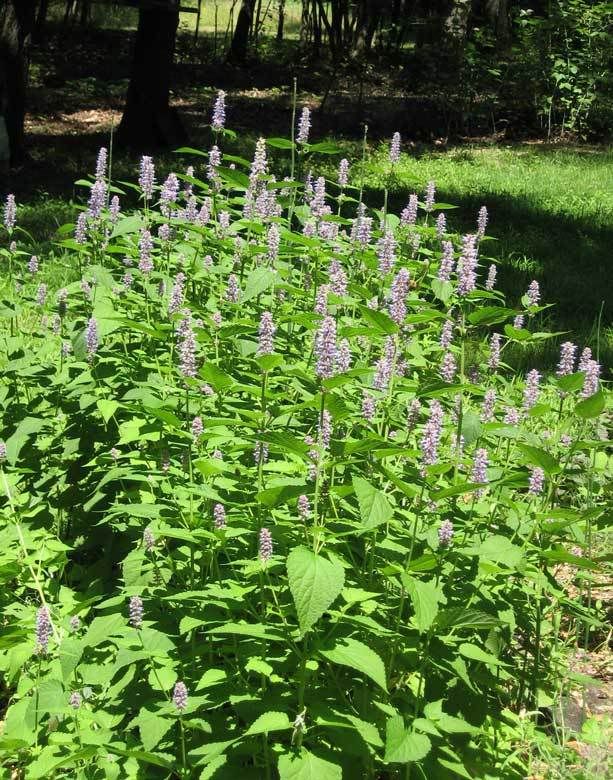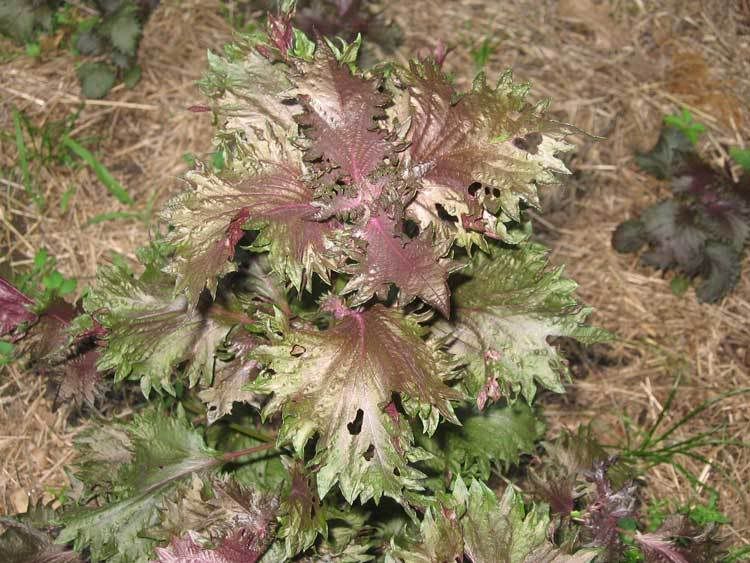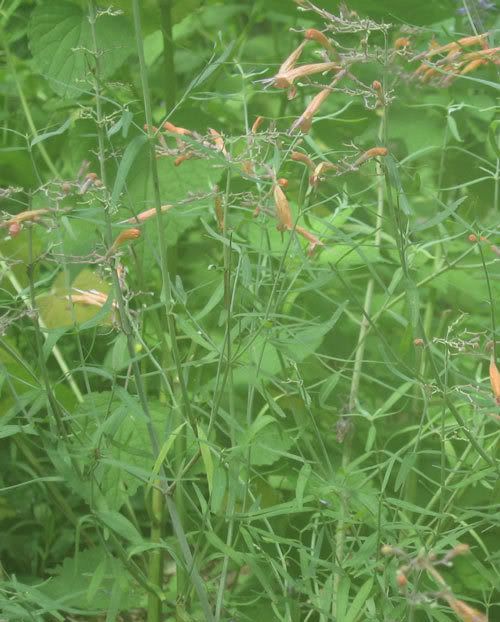ivan3
Chillin' In The Garden
Here are a couple that do well in the woods (two-three hours of direct light/under hickories). The first is Lavender Hyssop, it used to be used (and I'd guess still is) as a flavoring agent (crushing a leaf is similar to crushing a star anise and taking a sniff). In full sun they'll top at over five feet. This patch by the fire pit is pretty much perennial and plenty of reseeding goes on.

The next is Japanese Red Shiso (a Perilla? not a basil - though it is hard to tell the difference except in size). I wouldn't use it for cooking but it is apparently popular in Japan. We continue to grow them, year after year, because of what they do with the sunlight at dawn and sundown, reflecting the light in such a way that they seem to glow with a chrome hue (tried to catch with flash). They have pink flower spikes, grow to a little over five and a half feet in full sun (one pictured is under a Red Cedar), and produce large quantities of seeds (annual).

Of course, the old standby, Catmint tea is available here, but the plant must be cleared of itinerant ornamentals before processing...

All of these, while not being deer/poultry proof, certainly aren't their favorites.
Ed: sp. (as usual)

The next is Japanese Red Shiso (a Perilla? not a basil - though it is hard to tell the difference except in size). I wouldn't use it for cooking but it is apparently popular in Japan. We continue to grow them, year after year, because of what they do with the sunlight at dawn and sundown, reflecting the light in such a way that they seem to glow with a chrome hue (tried to catch with flash). They have pink flower spikes, grow to a little over five and a half feet in full sun (one pictured is under a Red Cedar), and produce large quantities of seeds (annual).

Of course, the old standby, Catmint tea is available here, but the plant must be cleared of itinerant ornamentals before processing...

All of these, while not being deer/poultry proof, certainly aren't their favorites.
Ed: sp. (as usual)

